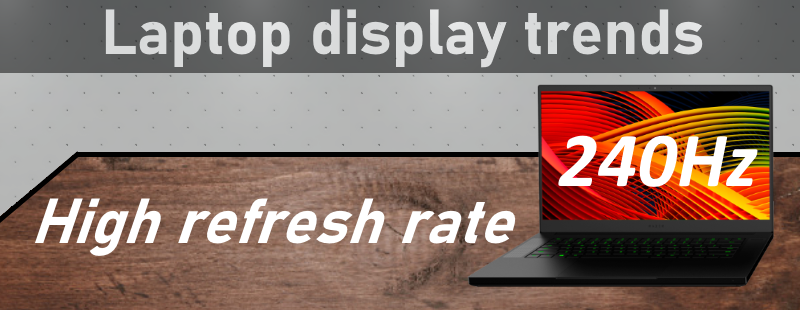
In 2019, many mainstream and high-end gaming laptops either come with a 144Hz display or have it as an upgrade option. Some even have the option for a 240Hz display.
So what’s the deal with all these Hz and refresh rates? The refresh rate is the frequency with which the image changes on the display. The standard refresh rate for most laptops is 60Hz, which is fine for the average users. However, increasing the refresh rate to 120Hz or above generally gives an increase sens of fluidity to whatever happens on the display. Games in particular benefit from high refresh rates for a smoother and more fluid gaming experience.
But higher refresh rates on IPS displays often come with high response times (13-18ms). In high paced gaming, high response times usually make things seem blurry despite the display pushing 240 frames each second. On top of that, to benefit from a high refresh rate, also the video card needs to run the game at 200 – 240 frames per second (FPS). Unfortunately, most gaming laptops usually can only reach 240 frames per second in a handful of titles. Even laptops with the latest and greatest video card, the RTX 2080, hardly reach 100+ frames in latest AAA titles on high graphics settings.
So is there any point to a 240Hz display? In theory, turning the video quality settings to medium or even low might help reach 200+ frames per second. For older titles, turning the resolution to 720p and the graphics settings to medium-high should also do the job.
However, most gamers do not like to turn their graphics settings to “low”. Consequently, the only situation in which a 240Hz display is left to shine is competitive multiplayer gaming. Titles like Counter-Strike: Global Offensive, League of Legends, Dota 2 truly benefit from the fluidity that comes with a higher FPS. However, even in this situation, the high response times negatively affect the reaction times of competitive gamers, so it is debatable as to whether the high refresh rate truly helps in combination with a high response time.
Finally, casual users also benefit from the smoothness of 240Hz displays in generic desktop applications, which might make working long hours in front of a laptop easier on the eyes. Though this comes at a significant price premium.
To conclude, currently, a 240Hz display does not bring many benefits to its users. Getting a 120Hz/144Hz display, which is significantly cheaper and has a much better response time might be a much better choice.
For those curious enough, here are some laptops that have 240Hz enabled displays:

Leave a Reply